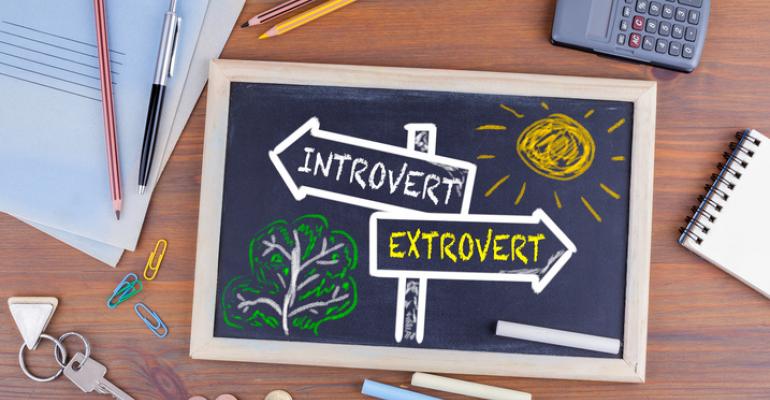Isn’t it interesting that, while up to half of meeting participants are introverts, most meetings are designed for extroverts? But it doesn’t have to be that way, said Play With a Purpose Chief IdeaSparker Sharon Fisher at a session at the 2017 Meeting Professionals International’s World Education Congress. With just a few tweaks, you can design an event that both introverts and extroverts will love.
What’s the Difference?
But first you need to know how each personality type thinks and feels. According to Fisher:
• Extroverts sort their thoughts by talking with others, while introverts prefer to think things through before they speak and, generally, would rather communicate through writing than verbally.
• Extroverts will talk with anyone about anything, while introverts limit their personal confidences to people they trust.
• Extroverts are visibly gregarious, while introverts tend to stay more in the background.
• Extroverts gain energy as they interact with people over the course of the day, while introverts start the day with their energy tanks full and become drained as the day goes on.
Note that shyness, which is often thought to be an introvert trait, actually is independent of introversion or extroversion, she said. Shyness is related to social anxiety and a fear of being judged.
Add Some Introversion to Your Meeting Design
Fisher shared seven ideas for making meetings more amenable to the introverts among us:
1. Add some down time. Think about how you structure the daily course of your program and build in time for thinking and reflection, she said. “Even just 30 minutes of downtime will give introverts time to recharge.” Think about including activities such as chair yoga, or including a labyrinth that people can walk through to do a moving meditation.
2. Add some quiet spaces. “Introverts may love to drink, but they hate cocktail parties,” Fisher said, as the introverts in the room laughed and nodded their heads. Provide some quiet spaces away from the loud music where small groups can sit and chat. “It’s easier for introverts to join a small group than it is to walk through a sea of people introducing themselves.”
3. De-intensify your Q&As. Introverts are very uncomfortable having to stand up, face the crowd, and give their name before asking a question. One idea is to use Catchboxes—throwable mics that can be easily passed around the room. Another idea Fisher said she had heard recently is to ask participants to write down the three things they most want to learn on notecards at the start of a session, and ask them to cross off each item as it is addressed. Collect the cards at the end of the session and use the topics that aren’t crossed off as the basis for the Q&A.
4. Don’t waste your name badges. Calling nametags “one of the most underutilized tools” in a planner’s toolkit, she suggested offering a sponsor-supported “bling station” where people can personalize their badges. You also could provide baskets of buttons that have sayings about things people may have in common, such as “Not a morning person” or “Dog lover.”
5. Use icebreakers to ease introverts into the program. One idea is to break participants into small groups and ask them to find five things everyone had in common. Even at general sessions, audience members can ask those sitting in front or behind them an easy, fun question, such as their favorite apps. Just don’t have them ask the people sitting beside them—they most likely already know them, especially if they are introverts.
6. Provide signs on each table that specify a fun topic, similar to those on the badge bling and buttons. Participants can sit at whichever table has a topic that appeals to them, and meet others who share that interest. This can help keep your luncheons and dinner banquets from feeling like that cliquey high school cafeteria that still strikes fear into the heart of introverts, whatever their age.
7. Have them “walk the walls.” Use your walls as conversation starters by posting topics or other food for thought directly on them, and have people “walk the walls.” One popular and often funny and moving in equal parts idea is the “Before I die…” project. Originally created by artist Candy Change on an abandoned house in New Orleans and now featured on more than 2,000 walls across the world, the idea is to provide a slate where people can share their personal reflections. If “Before I die…” is a bit deep for your purposes, you can always make it “Before I leaving this meeting…”.





